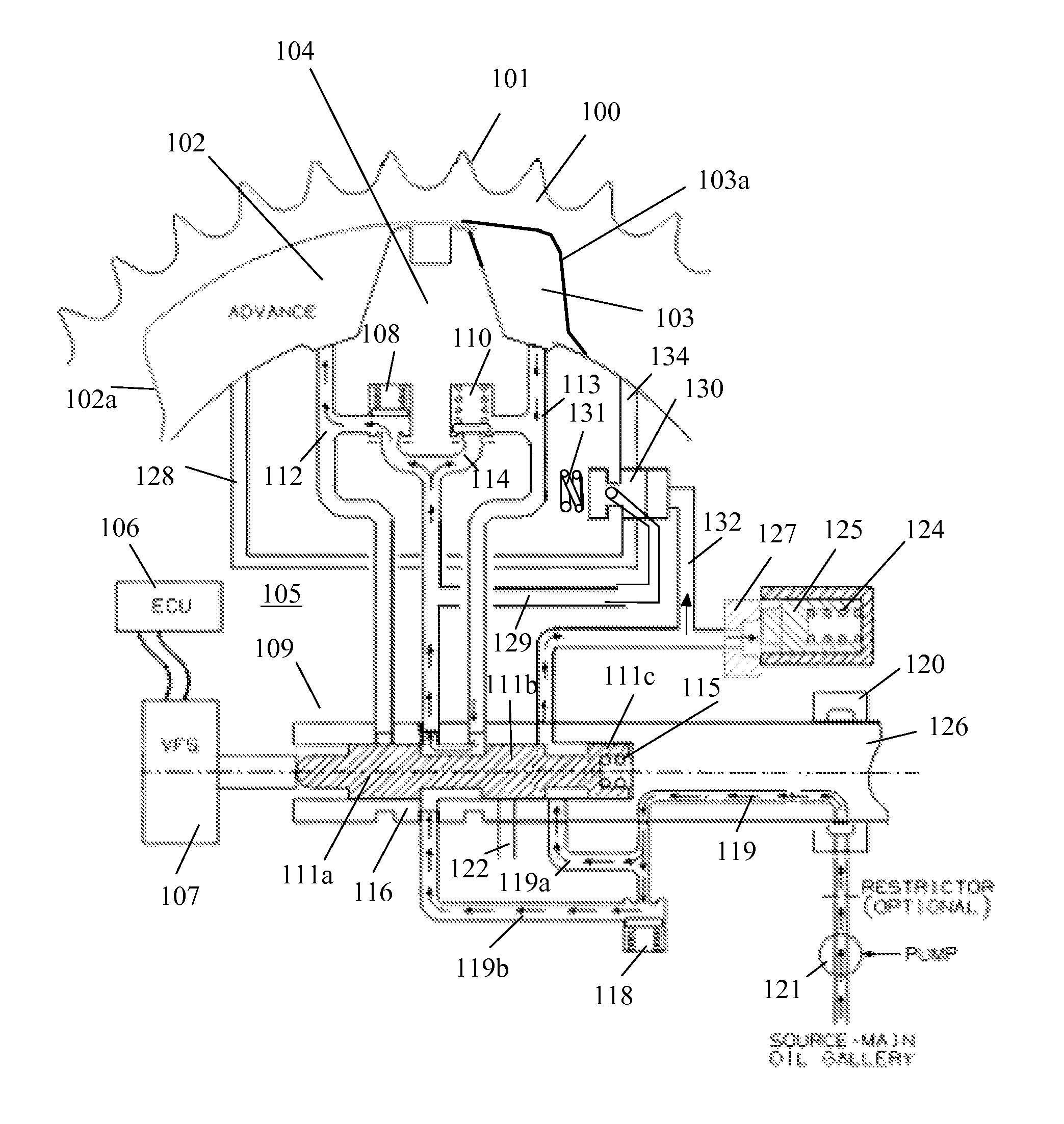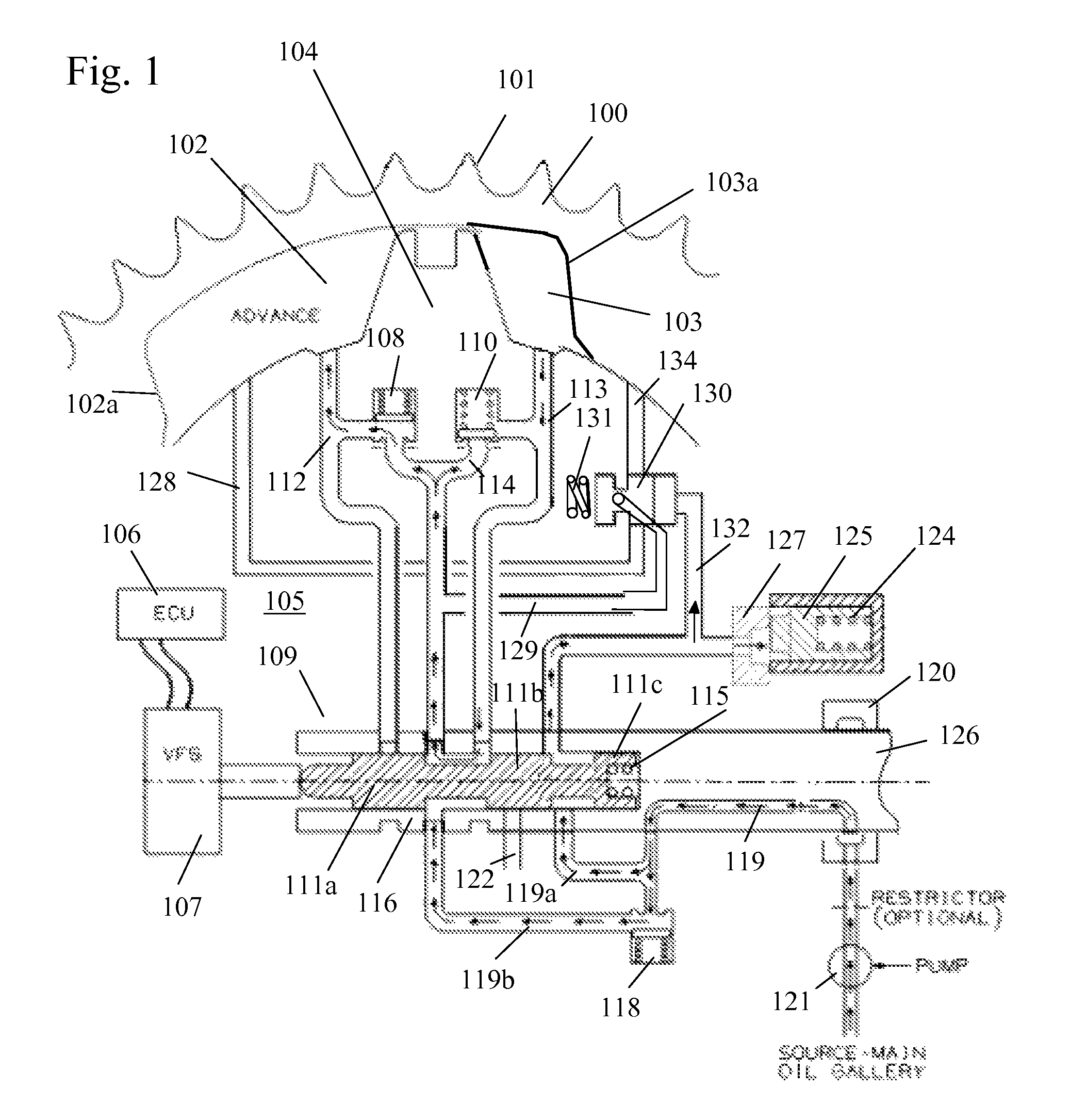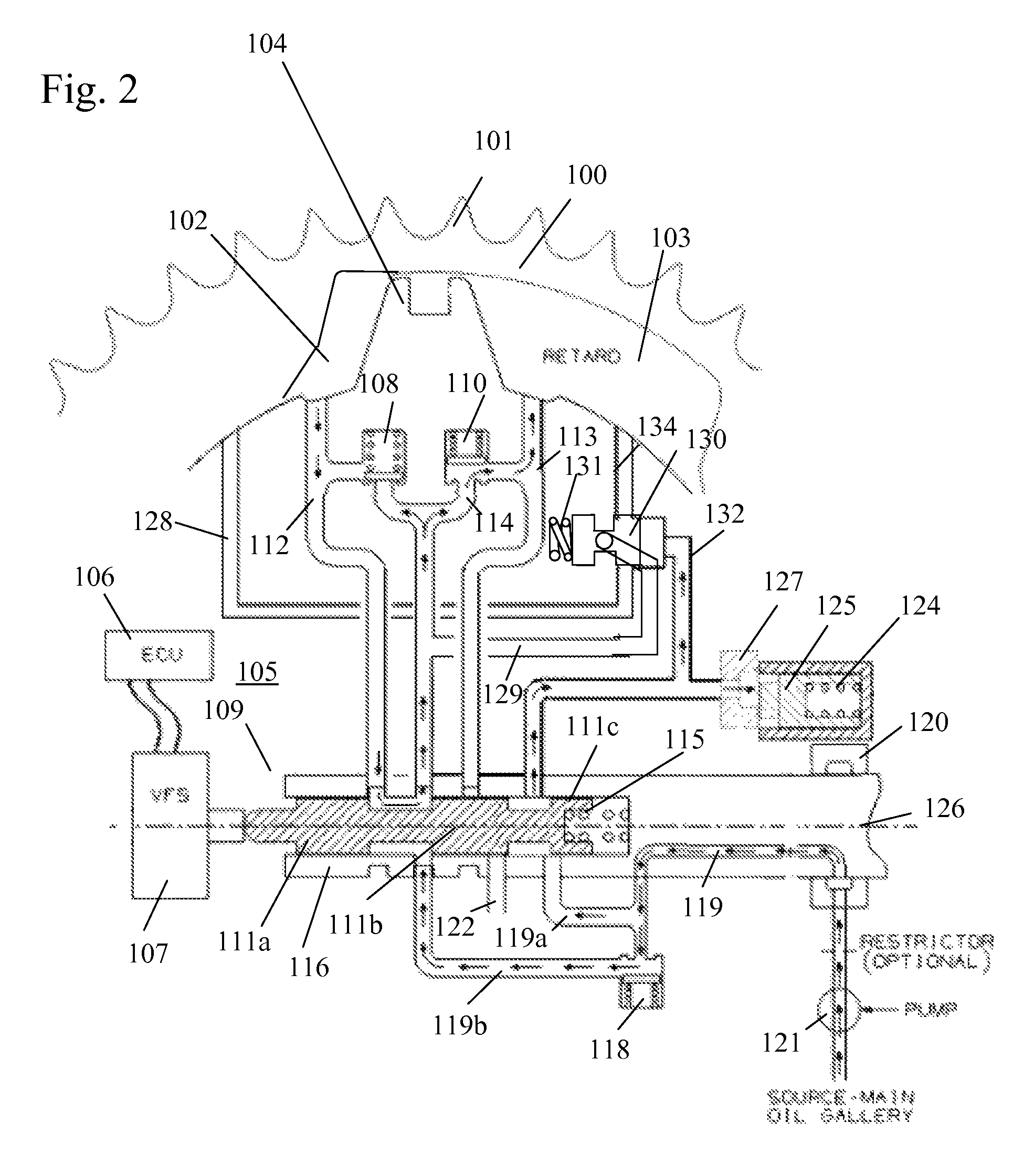Variable camshaft timing device with hydraulic lock in an intermediate position
a timing device and camshaft technology, applied in the direction of valve details, valve arrangements, valve drives, etc., can solve the problems of difficult manufacturing, long spool valve and sleeve, and inapplicability,
- Summary
- Abstract
- Description
- Claims
- Application Information
AI Technical Summary
Benefits of technology
Problems solved by technology
Method used
Image
Examples
first embodiment
[0044]Referring to FIGS. 1-10 of the first embodiment, torque reversals in the camshaft caused by the forces of opening and closing engine valves move the vane 104, The advance and retard chambers 102, 103 are arranged to resist positive and negative torque pulses in the camshaft 126 and are alternatively pressurized by the cam torque. The control valve 109 allows the vane 104 in the phaser to move by permitting fluid flow from the advance chamber 102 to the retard chamber 103 or vice versa, depending on the desired direction of movement.
[0045]The housing assembly 100 of the phaser has an outer circumference 101 for accepting drive force. The rotor assembly 105 is connected to the camshaft 126 and is coaxially located within the housing assembly 100. The rotor assembly 105 has a vane 104 separating a chamber formed between the housing assembly 100 and the rotor assembly 105 into an advance chamber 102 and a retard chamber 103. The vane 104 is capable of rotation to shift the relativ...
fifth embodiment
[0082]FIGS. 17a-20 show the present invention with the lock pin integrated into the piloted valve to form a piloted lock valve. Movement of the piloted lock valve is actively controlled by the control valve of the phaser. FIG. 17a shows the phaser moving from an advance position towards a mid position or intermediate phase angle position by the open hydraulic detent lock circuit. FIG. 17b shows the phaser moving from a retard position towards a mid position or intermediate phase angle by the open hydraulic detent lock circuit. FIG. 17c shows the phaser just prior to the lock pin end of the piloted lock valve engaging the recess. FIG. 18 shows the phaser in the mid position or intermediate phase angle position with lock pin end of the piloted lock valve engaging the recess. FIG. 19 shows the phaser moving towards the advance position. FIG. 20 shows the phaser moving towards the retard position.
[0083]Torque reversals in the camshaft caused by the forces of opening and closing engine v...
PUM
 Login to View More
Login to View More Abstract
Description
Claims
Application Information
 Login to View More
Login to View More - R&D
- Intellectual Property
- Life Sciences
- Materials
- Tech Scout
- Unparalleled Data Quality
- Higher Quality Content
- 60% Fewer Hallucinations
Browse by: Latest US Patents, China's latest patents, Technical Efficacy Thesaurus, Application Domain, Technology Topic, Popular Technical Reports.
© 2025 PatSnap. All rights reserved.Legal|Privacy policy|Modern Slavery Act Transparency Statement|Sitemap|About US| Contact US: help@patsnap.com



